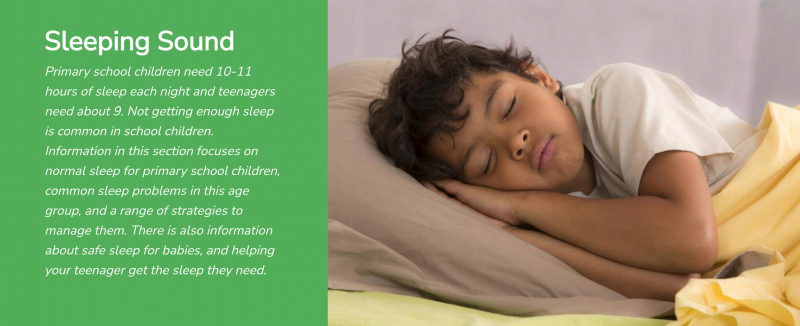Delayed Sleep
Delayed Sleep
How to manage delayed sleep depends on what's causing it - for example, bedtime resistance, anxiety or sleep associations. Find out what you can do if your child is going to bed later than they should.
Key points about delayed sleep management
- management of 'delayed sleep' depends on its cause
- good sleep habits are especially important for children with delayed sleep
- whatever the cause of delayed sleep, children end up going to bed later and waking up later in the morning
- setting a regular morning wake up time can help
- morning light is helpful in establishing an earlier bedtime
- daytime napping or sleeping can contribute to delayed sleep
This page is about sleep in primary school children. It's part of a whole section on sleeping sound.
How can I help manage my child's delayed sleep?
Management of delayed sleep depends on its cause - for example, bedtime resistance, anxiety or sleep associations. The strategies below are for ALL causes of delayed sleep.
Establish good sleep habits
Good sleep habits are especially important for children with delayed sleep. These include:
- going to bed and waking up at the same time every day (even on the weekends and holidays)
- making sure the bedroom is cool, quiet, and relatively dark
- having a regular bedtime routine that includes a wind-down time with quiet activities such as reading, quiet play or drawing
- being screen-free (TV/computer/games) at least 45 minutes before lights off
- avoiding caffeine (often in chocolate bars as well as Coke, tea and coffee) or alternatively having it in the morning
- regular meal times and avoiding snacking late at night
Shifting the internal body clock
Whatever the cause of delayed sleep, children end up going to bed later and waking up later in the morning. They shift their whole sleep time and their internal body clock forward into the night. This can be a problem as children are difficult to wake in the morning and get ready in time for school. There are several strategies that can help to change this pattern.
Set a regular morning wake up time
Make the initial bedtime close to when your child is falling asleep. Once your child is falling asleep within about 20 to 30 minutes, then you can make the bedtime earlier by 15 minutes. Keep this new bedtime for a few days until your child is falling asleep readily and then make the bedtime earlier again. You continue this until your child is able to go to sleep at the desired bedtime.
For example, if your child usually falls asleep at 10:30pm, then set the bedtime at 10:15pm and then when they are settling well after a few nights make it at 10:00pm for a few nights, and so on.
Morning light is helpful in establishing an earlier bedtime
Light exposure may include opening the curtains in your child's bedroom to allow natural light to enter the room, having your child eat breakfast in a sunny area and getting your child to spend some time outdoors first thing in the morning. On the weekend aim to spend at least an hour outside during the morning.
No daytime napping or sleeping
Daytime napping or sleeping can contribute to delayed sleep.
See more KidsHealth content on sleeping sound
This page last reviewed 16 March 2023.
Do you have any feedback for KidsHealth?
If you have any feedback about the KidsHealth website, or have a suggestion for new content, please get in touch with us.
Email us now

